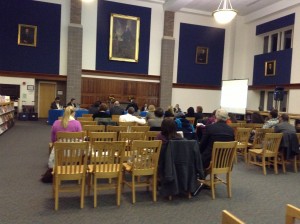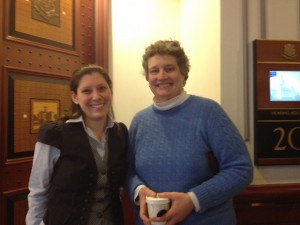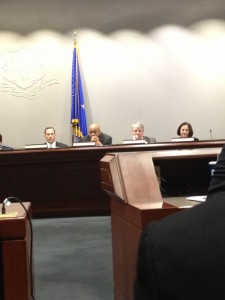Overwhelming Support Presented on Bill to Create Community Schools
On the morning of Monday, March 4th, 2013, the Education Committee held a public hearing at the Connecticut General Assembly regarding Senate Bill 1002, An Act Concerning Community Schools: http://www.cga.ct.gov/2013/TOB/S/2013SB-01002-R00-SB.htm. If passed, this bill would mandate that each school district designated by the legislation must nominate two elementary schools and one high school within their district to act as full service community schools, beginning 2014. Such community schools would serve the purpose of uniting community programs and organizations to provide, “comprehensive educational, developmental, family, health and wrap-around services during non-school hours for students, families and community members,” as stated by Werner Oyanadel, the Acting Executive Director of the Latino and Puerto Rican Affairs Commission.
Support for Senate Bill 1002 was presented from both national and local perspectives. Shital C. Shah, the assistant director of the American Federation of Teachers, noted teacher’s accountability of a student’s success, while stressing that, “research shows that family and community ties are essential in order for schools to educate our children.” Shah went on to state that SB 1002 would, “build the bridge between [schools] and the community so together they [can] address the barriers and challenges our students and families face on a daily basis.” The testimony of Steven Hernández, the Director of Public Policy and Research for the Connecticut Commission on Children, provided a local perspective on the positive bearings SB 1002 could generate. Hernández believes that the implementation of community schools will assist some neighborhoods of Connecticut in “breaking cycles of poverty through education and healthy development.” Specifically, when outlying the benefits the services a community school could potentially provide, Hernandez affirms that these schools would ensure that, “the basic physical, social, emotional, and economic needs of young people and their families are met.”
Others who testified in support of SB 1002 include Lori Pelletier, Secretary-Treasurer of the Connecticut AFL-CIO, and Susan Weisselberg, Chief of Wraparound Services for New Haven Public Schools. April Goff Brown, the Director of comprehensive youth services department of Catholic Charities, testified in favor of SB 1002, offering the suggestion of tailoring specific community schools to modified levels of engagement varying by communal needs. Melodie Peters, the President of AFT Connecticut, an affiliate of AFL-CIO in which Peters is the Vice President, stated that the bill should be passed because “we [AFL-CIO] do believe it does take a village, and if primary needs of family and children are addressed, the more receptive children will be.” Peters identified the central issue as the lack of opportunities faced by many families, and stated that the establishment of Community Schools would, “provide needed services to students and families at these schools.” Namely, those who testified in favor of the bill believed that the services the implemented schools would provide are necessary for the academic success of students. The availability of “wrap-around” services will increase the academic success of students by creating opportunities that would eliminate the poverty, hunger, lack of health care, and other obstacles in communities that are directly correlated with academic failure. It is commonly said throughout the education system that a student who is hungry cannot focus on a lesson, and community schools evoke this ideology.
Though little opposition to the bill was offered, senators on the Education Committee of the Connecticut General Assembly did ask questions pertaining to the legality and ethics of SB 1002. Morally, Senator Andrea Stillman, though in agreement with the bill, asked the question of parental involvement. She noted that she came from an underprivileged background where English was not the language she had spoken at home. Stillman questioned whether these programs would be ethical in “imposing on the parental role” by requiring a significant level of government involvement. Specifically in regards to nutrition, Stillman commented on the imposition of those outside of the familial unit (teachers, nurses, even government officials) and questioned where parental roles should begin and end. Legally, State Representative Andrew Fleischmann brought into question the specific text of the legislature, and inquired about how the bill seeks to order districts to deem current public schools as new community schools, compared to creating new facilities. Fleischmann mumbled, “I’m not sure how you’re interpreting the text that way,” when Oyanadel sought to explicate the bill’s proposal to “encourage” districts to appoint schools rather than “forcing” this selection.










